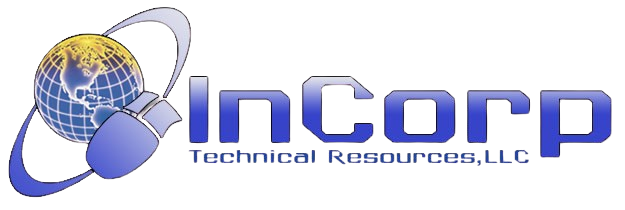Contractor Liability Insurance: What’s Covered and What’s Not?
Contractor Liability Insurance: What’s Covered and What’s Not? Home Blog Every contractor knows how fast things can go sideways on a job site. One mistake or accident can turn into a lawsuit, a damaged reputation, or worse, a financial loss that takes years to recover. Clients want security, cities require permits, and projects demand accountability. Liability insurance isn’t just a checkbox; it’s the foundation that helps your business stand when everything else shakes. Too often, contractors assume they’re fully protected when, in truth, gaps in coverage leave them dangerously exposed. Contractor Liability Insurance Basics Contractor liability insurance protects against the common risks tied to contracting work. Whether you build, renovate, or install, you’re working in spaces that aren’t entirely under your control. Accidents can happen quickly; when they do, having coverage can mean the difference between surviving a claim and being overwhelmed by pressure. Understanding the types of protection available is the first step to building a reliable safety net. What Contractor Liability Insurance Covers Contractor liability insurance typically covers physical damage to property caused by your work. Your policy can step in if a client’s wall is cracked during a job. It also covers bodily injury, such as someone tripping over equipment and sustaining an injury. Medical expenses, legal fees, and even settlements can be included. Most general liability policies also provide defense costs, which can easily outpace the damage itself. The Types of Contractor Liability Insurance Policies There’s no single “contractor insurance.” Instead, it’s a mix of policy types. General liability covers third-party injury and damage. Professional liability protects against claims arising from poor advice or design errors. Product and completed operations coverage addresses issues that occur after the work is completed. Each policy fills a different need; most contractors need a mix to stay protected. Why Liability Insurance is a Requirement on Most Jobs Clients and municipalities often won’t work with uninsured contractors. Liability insurance is typically required to obtain permits or qualify for larger projects. It shows you take responsibility seriously and can handle setbacks. Moreover, general contractors may require proof of insurance from subcontractors before hiring them. Without it, you’re at a disadvantage before the job even starts. What Contractor Liability Insurance Does Not Cover Knowing what’s not covered is just as important as knowing what is. Many contractors believe their policy protects them against everything, but that’s rarely the case. Specific exclusions are written into most policies, and understanding them helps avoid nasty surprises. Without that awareness, denied claims can come as a surprise. Workers’ Comp Gaps in Contractor Liability Insurance Contractor liability insurance doesn’t cover injuries to your employees. That’s where workers’ compensation comes in. If your crew member breaks an arm on the job, general liability won’t help. Workers’ comp is legally required in most states once you have staff. It’s essential to separate what each policy handles to stay protected on all fronts. Faulty Workmanship and Quality Control Issues Liability policies usually exclude poor workmanship. If your team installs a fence that collapses due to bad construction, that’s on you. Some completed operations endorsements may cover damage caused by faulty work but not the work itself. That leaves many contractors vulnerable if quality slips. To avoid confusion, read the exclusions section of your policy closely. Intentional Acts and Illegal Work Coverage ends where intent begins. If you knowingly break codes, cut corners, or damage property, your insurer won’t back you. It also applies to unlicensed work where a license is required. For example, claiming coverage after performing electrical work without certification will likely get denied. Liability insurance isn’t a shield for dishonest actions. Damage to Your Property and Equipment General liability doesn’t protect your tools, trucks, or machines. If your backhoe gets stolen, that’s a job for equipment or inland marine insurance. Similarly, you’ll need commercial property coverage if your warehouse burns down. Contractors often confuse these policies, which leads to risky gaps. Keep your assets insured with the proper supplemental protection. Why Contractor Liability Insurance Coverage Matters A contractor without proper insurance is walking a tightrope. One fall, and everything can collapse—financially, legally, and professionally—liability insurance cushions that fall by catching the risks you can’t always predict. Beyond compliance and checkboxes, it’s about long-term survival. Common Scenarios That Lead to Lawsuits During the demo, you drill into a water line and flood a home, or someone walking by your side trips over unsecured wiring. Your sub forgets to secure a railing, and a visitor gets hurt. These are everyday risks that spark claims and lawsuits. Liability insurance is designed for these moments, provided the event falls within your coverage scope. The Real Cost of Being Underinsured Lawsuits drain more than just your wallet; they drain time, energy, and credibility. A single claim can result in legal fees, court costs, and judgments that total tens of thousands of dollars. Without adequate coverage, you’re left paying out of your pocket. That can stall growth, delay payroll, or even lead to bankruptcy. Clients also talk, and your reputation may suffer for years to come. Choosing the Right Contractor Liability Insurance Picking the right insurance is not about finding the cheapest quote. It’s about finding the policy that fits your business today and grows with it tomorrow. That takes asking the right questions and understanding your operations clearly. Cookie-cutter policies rarely hold up when put to the test. What to Look for in a Policy Start with the basics: Your coverage limit should match the scale of your projects. Look for exclusions that don’t make sense for your trade. Roofing contractors, for example, should ensure that height work isn’t excluded. Check for endorsements that expand coverage to match unique risks. Endorsements often cover tools, rented equipment, or temporary structures. Questions to Ask an Insurance Broker Is subcontractor work covered? Will claims from past jobs trigger future issues? What is a deductible, and how does it affect small claims? Does the policy adjust as your business grows? Asking these specific questions prevents surprises down










